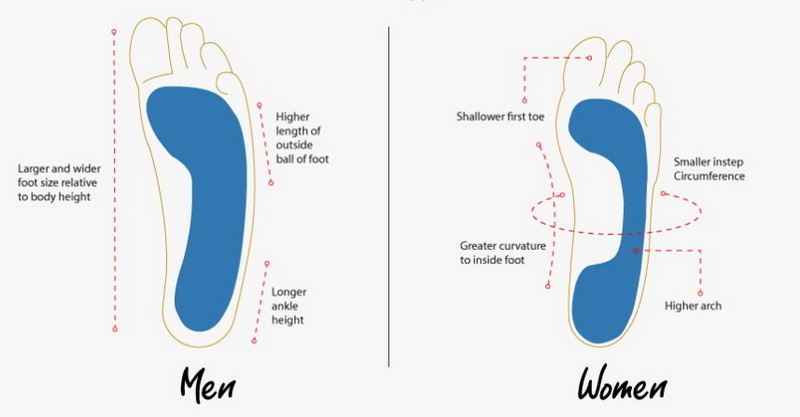Content Menu
● Introduction to Shoe Widths
>> Men's and Women's Shoe Width Comparison
● Factors Influencing Shoe Width
>> Foot Anatomy
>> Brand Variations
● Impact on Consumers
>> Measuring Foot Width
● Exceptions and Considerations
>> Gender-Specific Designs
● Material and Weight Considerations
● The Importance of Shoe Width for Foot Health
● Myths About Shoe Widths
● Customization and Personalization
● Technological Advancements
● Consumer Preferences and Trends
● Conclusion
● FAQ
>> 1. Are all men's shoes wider than women's shoes?
>> 2. Why do men's and women's shoe sizes differ?
>> 3. Can men wear women's shoes if they have narrow feet?
>> 4. Do all brands offer the same width options for men and women?
>> 5. How can I measure my foot width accurately?
The age-old question of whether all men's shoes are wider than women's shoes has sparked debate among shoe enthusiasts and consumers alike. While it is generally true that men's shoes tend to be wider, there are several factors to consider when comparing shoe widths across genders. In this article, we will delve into the differences in shoe widths, explore exceptions, and discuss how these differences impact consumers.

Introduction to Shoe Widths
Shoe widths are categorized using a letter system, with narrower widths denoted by letters like "A" or "AA" for women and "B" for men, while wider widths are represented by "E" or "EE" for men and "D" or "W" for women. The standard width for men is typically "D," while for women, it is "B".
Men's and Women's Shoe Width Comparison
| Width Category | Men's Width | Women's Width |
| Narrow | B | AA or 2A |
| Medium | D | B |
| Wide | E or EE | D or W |
| Extra Wide | 2E or 3E | WW or XW |
| Extra Extra Wide | 4E or 5E | — |
| Ultra Wide | 6E or 7E | — |
Factors Influencing Shoe Width
Foot Anatomy
Men generally have wider feet than women, which is why men's shoes often come in wider sizes. However, individual variations are significant, and some men may have narrower feet, while some women may have wider feet. Research has shown that women's feet tend to have narrower heels but wider forefeet compared to men's feet. This anatomical difference influences shoe design, with women's shoes often featuring a narrower heel and a wider forefoot to accommodate these proportions.
Brand Variations
Different brands may have varying width standards. Some brands offer "unisex" options that can fit both men and women, but these are often based on men's sizing. Brands like Hoka and Nike have introduced gender-neutral models, but these typically follow men's sizing. This means that while they are marketed as gender-neutral, they may not cater to the narrower widths often preferred by women.
Impact on Consumers
Consumers with atypical foot widths often face challenges finding the right fit. Men with narrow feet might consider women's shoes, which are generally narrower, while women with wide feet might opt for men's shoes or seek out brands offering wider sizes for women. The lack of standardization in shoe widths across brands complicates this process, as what constitutes a "wide" width can vary significantly.
Measuring Foot Width
To accurately determine your shoe width, you can use a simple method at home. Place your foot on a piece of paper and trace around it. Measure the widest part of the tracing, usually behind the toes, to determine your shoe width. This method helps when consulting shoe width charts to find the best fit.
Exceptions and Considerations
Gender-Specific Designs
Beyond width, shoe designs can differ significantly between genders. Women's shoes often have a narrower heel and a wider forefoot to accommodate the typical female foot shape. Some brands adjust the drop height or cushioning in women's shoes to better support their biomechanics. For instance, women's running shoes may include additional support around the forefoot to prevent stress fractures or other overuse injuries due to the wider Q-angle in women.

Material and Weight Considerations
Shoe materials and weight also play a crucial role in the design of men's and women's shoes. Men's shoes, particularly running shoes, often require denser cushioning to support heavier body weights. This results in men's shoes being heavier than their women's counterparts, which can affect performance in competitive events. Additionally, the choice of materials can influence breathability and durability, with some brands opting for lighter, more breathable materials in women's shoes to enhance comfort during prolonged wear.
The Importance of Shoe Width for Foot Health
Shoe width is crucial for maintaining foot health. Wearing shoes that are too narrow can lead to ingrown toenails, painful blisters, calluses, or even bunion formation. Conversely, shoes that are too wide can cause instability and lead to injuries like sprains. Finding the right width ensures comfort and prevents long-term foot problems. Regularly checking the fit of your shoes and adjusting as needed is essential, especially for individuals with changing foot sizes due to age or health conditions.
Myths About Shoe Widths
There are several myths surrounding shoe widths. One common misconception is that shoe widths are standardized across brands. However, the reality is that different manufacturers may use different standards for what constitutes a "wide" or "narrow" width. This variability means that consumers should not rely solely on width labels but also consider the overall fit and feel of the shoe.
Customization and Personalization
In recent years, there has been a trend towards customization and personalization in the shoe industry. Some brands offer bespoke shoe services where consumers can design their shoes to fit their exact foot dimensions. This approach allows for a tailored fit that can address specific width needs, providing a solution for those who struggle with standard sizes.
Technological Advancements
Technological advancements have also impacted shoe design and width options. The use of 3D printing and digital scanning allows for precise measurements and customized fits. This technology can create shoes that perfectly match an individual's foot shape, eliminating the need to choose between standard widths. While still in its early stages, this technology holds promise for revolutionizing how shoes are made and fitted.
Consumer Preferences and Trends
Consumer preferences play a significant role in shaping the shoe market. Trends towards comfort and wellness have led to increased demand for shoes with wider toe boxes and softer materials. Brands are responding by offering more width options and incorporating features like arch support and cushioning to enhance comfort. This shift highlights the importance of consumer feedback in driving innovation in shoe design.
Conclusion
While it is generally true that men's shoes are wider than women's, there are many exceptions and variations depending on the brand and individual foot anatomy. Consumers should consider these factors when selecting shoes to ensure the best fit and comfort.

FAQ
1. Are all men's shoes wider than women's shoes?
No, not all men's shoes are wider than women's. While men's shoes typically have a "D" width and women's a "B" width, individual variations and brand differences exist.
2. Why do men's and women's shoe sizes differ?
Men's and women's shoe sizes differ primarily due to differences in foot width and anatomy. Men generally have wider feet, and their shoes reflect this. Additionally, women's shoes often have a narrower heel and wider forefoot.
3. Can men wear women's shoes if they have narrow feet?
Yes, men with narrow feet can consider wearing women's shoes, especially if they find men's shoes too wide. However, they should ensure the length is appropriate by sizing down about 1.5 sizes from their usual men's size.
4. Do all brands offer the same width options for men and women?
No, not all brands offer the same width options. Some brands provide wider options for men and narrower options for women, while others may offer unisex or gender-neutral models.
5. How can I measure my foot width accurately?
To measure your foot width accurately, place your foot on a piece of paper and trace around it. Measure the widest part of the tracing to determine your shoe width. You can also visit a shoe store for professional measurement.

















